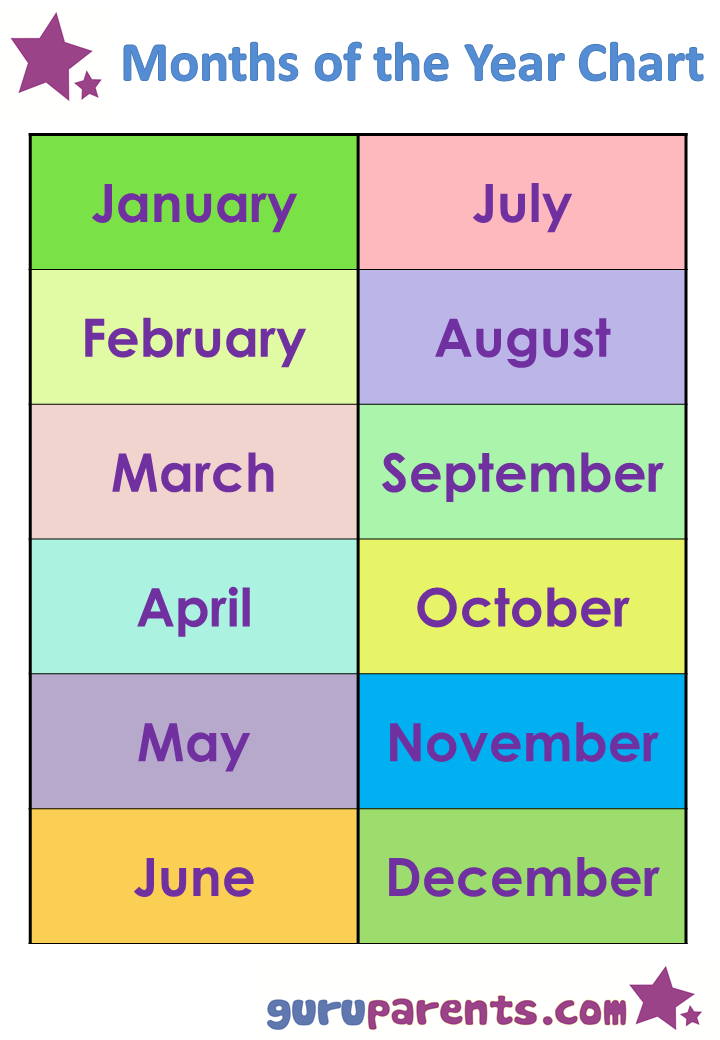Learning the months of the year may take time because the concept of time can be difficult for young children to understand. Having a Months of the Year Chart is a great start.
If your child is familiar with the days of the week, you might like to introduce them to the months of the year – even if they are just names for a while.
Our Months of the Year Chart is brightly colored and ideal to have on a wall or visible for your child to see and recite with you every day of the month!
Free, printable Months of the Year Chart
Months of the Year Chart Quick Tips
1. Start by reciting the months in order. The months of the year (as with the days of the week) have a melodical flow – almost song-like, which can help children remember.
2. Point out the months that are significant for your child. For example, "Your birthday is in January. January is the first month of the year! My birthday is in May – the fifth month."
Or, for those that celebrate Christmas: "Christmas is in December – the last month of the year".
Other significant months to point out are family or school holidays, family members’ birthdays, start of school and so on.
3. If your child is ready, you might like to sound out the words. There aren’t too many tricky sounds in the month names, but our letter worksheets can help if you get stuck.
4. Show your child a calendar. Point out the month names on the Months of the Year Chart. Explain how there are approximately 30-31 days in every month – that’s 30-31 ‘night-time sleeps’. You can cross off each day and make a big deal about turning over the page to the next month – taking note of how long has passed since the end of the last month!
Quick Facts: Meanings of the Months of the Year
The original Roman year had only ten months. which started from the month of March. The second king of Rome added the two extra months that were unnamed, as it was the winters, and no agricultural activity took place during that period (January and February).

